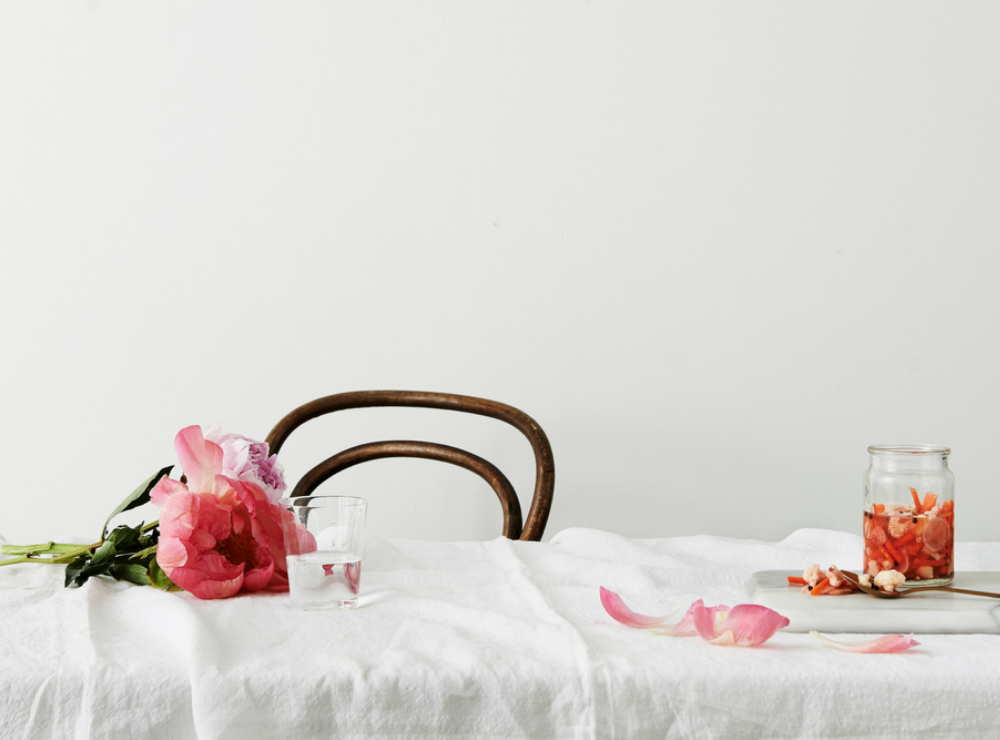
Fermented vegetables are perfect on a mezze platter or added to a salad, whole or thinly sliced and tossed through. This recipe will work for any root vegetable, so if you have a favourite one or two you can alter quantities accordingly for your next batch.
Ingredients
- 1 teaspoon mustard seeds
- 1⁄2 cauliflower, broken into small florets
- 1 carrot, washed and cut into sticks
- 8 radishes, washed and halved, quartered or sliced (depending on size)
- 6 cloves garlic, peeled
- 3 bay leaves
- 2 cups (500ml) filtered water
- 1⁄2 cup (125ml) apple cider vinegar (unpasteurised)
- 2 tablespoons Himalayan salt
- 1 tablespoon raw honey
- outer cabbage leaf
Method
- Dry-roast the mustard seeds in a small frying pan over low heat for 30 seconds, or until they begin to pop.
- Tightly pack the vegetables, mustard seeds and bay leaves into a sterilised 1.5-litre glass jar* or specialised fermentation jar with an airlock lid.
-
Combine the water, vinegar, salt and honey in a jug and stir to dissolve the salt. Pour the liquid over the vegetables, to just cover. Pour in a little-filtered water to cover completely, if required. Firmly press down the vegetables to submerge in liquid. Cover the vegetables with a piece of cabbage leaf. If using an ordinary jar, weigh down with a specialised ceramic weight or smaller jar filled with water. Ensure there is a 5cm gap between the vegetables and the top of the jar to allow for extra liquid released during the fermentation process. Set the jar on a large plate to catch any over overflow. Cover the jar with a double layer of muslin cloth and secure with a rubber band.
If using a mason, preserving or specialised fermenting jar, secure the lid. - Let stand at room temperature, out of direct sunlight and in a well-ventilated place for 5-7 days**, or until the mixture becomes pleasantly tangy. During this time, if using a jar covered with a muslin cloth, check daily to ensure the vegetables are completely submerged in brine, to prevent mould from forming. press down with a wooden spoon if necessary. If using a mason or preserving jar, open ever so slightly every day to release gases (a process known as burping) to prevent pressure build-up which could result in an explosion. Once fermented, seal with a lid. Fermented vegetables can be used immediately or stored in the refrigerator for a week or so to age before use, and up to 3 months.
- You can store this pickle in the refrigerator for up to 3 months. the flavours will continue to develop over time. If you’ve got some fresh vine leaves on hand add one to your vegetables – the tannins released will help to achieve a crunchier outcome. Fermented garlic can discolour to a green/blue colour but it is still perfectly safe to eat. To help prevent this, ensure you use chlorine-free water and non-iodised salt.
Visit The Digest for more beauty and wellbeing inspiration.




